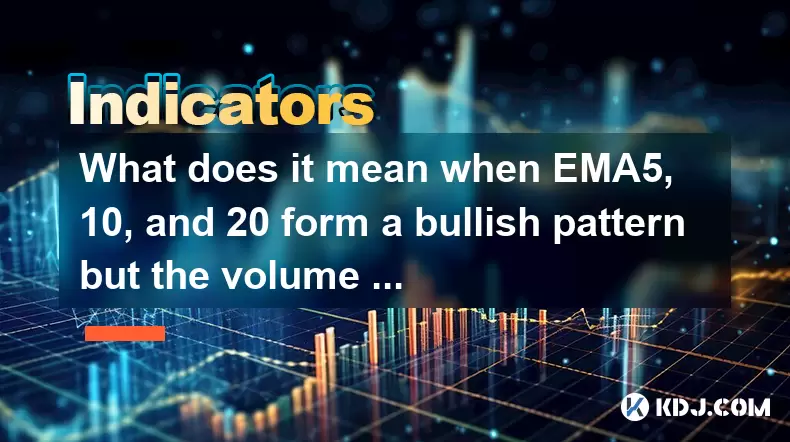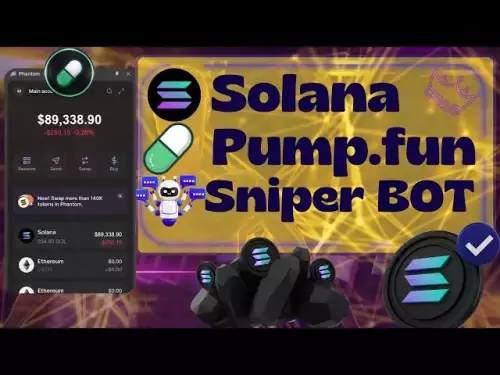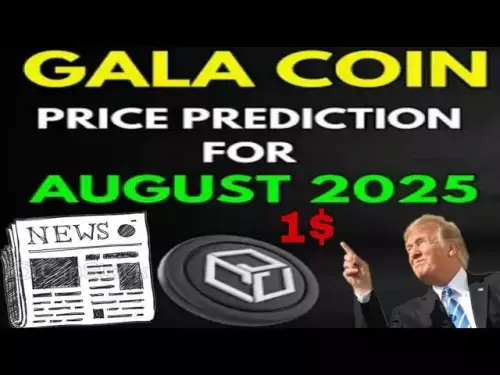-
 Bitcoin
Bitcoin $115100
-1.30% -
 Ethereum
Ethereum $4758
-1.70% -
 XRP
XRP $3.027
-2.19% -
 Tether USDt
Tether USDt $0.9998
-0.01% -
 BNB
BNB $883.2
-1.42% -
 Solana
Solana $204.0
2.62% -
 USDC
USDC $1.000
0.02% -
 Dogecoin
Dogecoin $0.2371
-0.97% -
 TRON
TRON $0.3612
-1.24% -
 Cardano
Cardano $0.9128
-2.19% -
 Chainlink
Chainlink $26.13
-3.93% -
 Hyperliquid
Hyperliquid $44.73
0.90% -
 Sui
Sui $3.715
-0.56% -
 Stellar
Stellar $0.4153
-2.41% -
 Ethena USDe
Ethena USDe $1.000
-0.04% -
 Bitcoin Cash
Bitcoin Cash $588.9
-2.06% -
 Avalanche
Avalanche $25.91
3.27% -
 Hedera
Hedera $0.2525
-1.45% -
 Litecoin
Litecoin $120.9
-1.35% -
 UNUS SED LEO
UNUS SED LEO $9.607
0.30% -
 Toncoin
Toncoin $3.382
-0.31% -
 Shiba Inu
Shiba Inu $0.00001329
-0.38% -
 Uniswap
Uniswap $11.38
-1.67% -
 Polkadot
Polkadot $4.222
2.83% -
 Aave
Aave $354.5
4.93% -
 Dai
Dai $0.0000
0.00% -
 Bitget Token
Bitget Token $4.704
-1.49% -
 Cronos
Cronos $0.1565
1.83% -
 Ethena
Ethena $0.7463
1.55% -
 Monero
Monero $265.8
-0.39%
What does it mean when EMA5, 10, and 20 form a bullish pattern but the volume is insufficient?
A bullish EMA5 > EMA10 > EMA20 pattern signals potential uptrend, but without strong volume, it may be a false breakout.
Aug 13, 2025 at 11:35 am

Understanding the EMA Bullish Pattern
When traders observe that the EMA5, EMA10, and EMA20 form a bullish pattern, they are typically referring to a configuration where the shorter-term moving averages cross above the longer-term ones in a cascading fashion. This is commonly known as a "golden cross" setup when EMA5 crosses above EMA10, which in turn is positioned above EMA20. The alignment suggests that short-term momentum is accelerating relative to medium-term price action, indicating a potential upward trend reversal or continuation. Each EMA represents the average closing price over a specific number of periods: EMA5 reflects the last 5 candles, EMA10 the last 10, and EMA20 the last 20. Because EMAs give more weight to recent prices, they react faster to price changes than simple moving averages (SMA).
The visual cue of EMA5 > EMA10 > EMA20 on a price chart is often interpreted as a strong bullish signal. Traders may use this pattern to initiate long positions, set stop-loss orders below recent swing lows, or confirm entries suggested by other indicators. However, the reliability of this pattern depends heavily on contextual confirmation, especially volume.
Role of Volume in Confirming EMA Signals
Volume is a critical component in technical analysis because it reflects the strength of market participation behind a price move. A bullish EMA pattern supported by high trading volume indicates that a significant number of market participants are buying into the trend, increasing the likelihood that the move is sustainable. Conversely, when the EMA5, EMA10, and EMA20 form a bullish alignment but volume remains low, it raises concerns about the legitimacy of the breakout.
Low volume during a bullish EMA formation suggests that the price increase may be driven by limited buying pressure or even short-covering rather than strong institutional or retail demand. In such cases, the upward movement might lack the momentum to continue, making it vulnerable to reversal. This discrepancy between price action and volume is known as a "bullish divergence in price, bearish divergence in volume" and is often a warning sign.
Interpreting Insufficient Volume in Bullish EMA Setups
When volume is insufficient during a bullish EMA crossover, the market may be experiencing a false breakout. This occurs when price pushes higher, triggering technical buy signals, but without the backing of strong volume, the rally fails to attract follow-through buying. As a result, the price may stall or reverse quickly. Traders should treat such setups with caution.
Key characteristics of low-volume bullish EMA patterns include:
- Price rising on declining or flat volume compared to previous uptrends.
- Lack of large candlesticks or strong green bars, indicating weak conviction.
- Occurrence during low-liquidity periods, such as weekends or holidays in crypto markets.
- Presence of overbought conditions on oscillators like RSI, further weakening the signal.
In the cryptocurrency market, where volatility and manipulation are common, low-volume breakouts are particularly risky. Whales or bots can easily push prices to trigger EMA crossovers without genuine demand, creating "pump traps" for retail traders.
How to Analyze Volume in Relation to EMA Patterns
To assess whether volume supports a bullish EMA formation, traders should perform a comparative volume analysis. This involves examining the current volume relative to:
- The average volume over the past 20 periods.
- Volume levels during previous price increases.
- Volume on the specific candles where EMA crossovers occur.
A practical method is to overlay a volume histogram on the price chart and look for spikes coinciding with the EMA5 crossing above EMA10. If the volume bar is significantly shorter than those during prior bullish moves, the signal is suspect. Another technique is using the Volume Weighted Average Price (VWAP) to determine if the price is moving with volume support. If price is above VWAP and volume is rising, the bullish EMA pattern gains credibility.
Additionally, traders can apply the On-Balance Volume (OBV) indicator. A rising OBV line confirms accumulation, while a flat or falling OBV during a bullish EMA setup indicates distribution or lack of buying interest.
Practical Steps to Respond to Low-Volume Bullish EMA Signals
When encountering a bullish EMA5, EMA10, and EMA20 alignment with insufficient volume, traders should avoid immediate entry and instead follow a cautious verification process: - Wait for volume confirmation on the next 1–3 candles. A surge in volume on a follow-up green candle strengthens the signal.
- Check higher timeframes (e.g., 4-hour or daily) to see if the same pattern appears with stronger volume.
- Use additional indicators such as MACD histogram expansion or RSI moving above 50 with momentum.
- Set conditional orders like buy-stop above a recent resistance level, triggered only if volume increases.
- Monitor order book depth on exchanges to detect real buying pressure, especially in spot or futures markets.
For example, on a Binance BTC/USDT 1-hour chart, if EMA5 crosses above EMA10 and EMA20 but the volume bar is 30% below the 20-period average, it’s prudent to delay entry until volume validates the move. Placing a limit order slightly above the current price with a volume filter (if supported by the platform) can automate this logic.
Common Misinterpretations and Risks
Many novice traders mistake any EMA crossover as a guaranteed buy signal, ignoring volume entirely. This can lead to premature entries and losses when the market reverses. Another misconception is assuming that volume must spike only on the crossover candle. In reality, sustained volume over several periods is more important than a single spike.In cryptocurrency trading, low liquidity pairs (e.g., altcoins with low market cap) are especially prone to misleading EMA signals due to thin order books. A small buy order can trigger a price jump and EMA crossover without real demand. Therefore, volume analysis must be paired with market context, including news, exchange listings, and broader market sentiment.
Frequently Asked Questions
What does "insufficient volume" mean in crypto trading?
Insufficient volume refers to trading activity that is significantly lower than the asset’s average volume over a comparable period. For instance, if a cryptocurrency typically averages 10,000 BTC traded per day but shows only 3,000 BTC on a breakout day, the volume is considered insufficient to confirm the move.Can a bullish EMA pattern still succeed without high volume?
Yes, but the probability of success is lower. In some cases, gradual accumulation by large players may occur over time without volume spikes. However, without volume confirmation, the risk of a fakeout or reversal increases significantly.How do I set up volume alerts on trading platforms?
On platforms like TradingView, go to the volume indicator, click "Settings," and enable alerts for conditions such as "volume greater than 1.5x average" or "volume below 50% of average." For Binance or Bybit, use third-party tools or API scripts to monitor volume deviations.Is there a specific volume threshold to confirm a bullish EMA pattern?
There is no universal threshold, but a common rule is that volume should be at least 1.5 times the 20-period average on the breakout candle. Some traders use a moving average of volume as a dynamic benchmark for comparison.
Disclaimer:info@kdj.com
The information provided is not trading advice. kdj.com does not assume any responsibility for any investments made based on the information provided in this article. Cryptocurrencies are highly volatile and it is highly recommended that you invest with caution after thorough research!
If you believe that the content used on this website infringes your copyright, please contact us immediately (info@kdj.com) and we will delete it promptly.
- XYZVerse, Shiba Inu, and the 2025 Bull Cycle: A Meme Coin Evolution
- 2025-08-24 13:05:12
- WLFI Token, BingX, and the Trading Landscape: A New York Perspective
- 2025-08-24 12:45:20
- Aave, Governance, Allocation: Navigating DeFi's Shifting Sands
- 2025-08-24 12:45:20
- Crypto Coins in 2025: Meme Coins, Undervalued Blockchains, and Bull Run Predictions
- 2025-08-24 13:05:12
- Fed Pivot Ignites Crypto Rally: Altcoins Set to Outperform?
- 2025-08-24 13:25:12
- Eric Trump, Tokyo, and Metaplanet: A Bitcoin Bonanza?
- 2025-08-24 11:05:13
Related knowledge

What does it mean when the +DI and -DI cross frequently in the DMI indicator but the ADX is flattening?
Aug 11,2025 at 03:15am
Understanding the DMI Indicator ComponentsThe Directional Movement Index (DMI) is a technical analysis tool composed of three lines: the +DI (Positive...

What does the sudden appearance of a "dark cloud cover" candlestick pattern during an uptrend indicate?
Aug 13,2025 at 11:35am
Understanding the 'Dark Cloud Cover' Candlestick PatternThe dark cloud cover is a bearish reversal pattern in technical analysis that typically appear...

What does it mean when the moving average, MACD, and RSI all send buy signals simultaneously?
Aug 11,2025 at 01:42pm
Understanding the Convergence of Technical IndicatorsWhen the moving average, MACD, and RSI all generate buy signals at the same time, traders interpr...

What does it mean when both the KDJ indicator and the RSI show overbought signals simultaneously?
Aug 13,2025 at 11:35am
Understanding the KDJ Indicator in Cryptocurrency TradingThe KDJ indicator is a momentum oscillator derived from the Stochastic Oscillator, widely use...

What does it mean when the price is trading above the SAR indicator but the red dots are densely packed?
Aug 09,2025 at 11:49pm
Understanding the SAR Indicator and Its Visual SignalsThe SAR (Parabolic Stop and Reverse) indicator is a technical analysis tool used primarily to de...

What does it mean when the candlestick chart forms a "Morning Star" but trading volume is sluggish?
Aug 12,2025 at 06:28pm
Understanding the Morning Star Candlestick PatternThe Morning Star is a three-candle bullish reversal pattern commonly observed in cryptocurrency pric...

What does it mean when the +DI and -DI cross frequently in the DMI indicator but the ADX is flattening?
Aug 11,2025 at 03:15am
Understanding the DMI Indicator ComponentsThe Directional Movement Index (DMI) is a technical analysis tool composed of three lines: the +DI (Positive...

What does the sudden appearance of a "dark cloud cover" candlestick pattern during an uptrend indicate?
Aug 13,2025 at 11:35am
Understanding the 'Dark Cloud Cover' Candlestick PatternThe dark cloud cover is a bearish reversal pattern in technical analysis that typically appear...

What does it mean when the moving average, MACD, and RSI all send buy signals simultaneously?
Aug 11,2025 at 01:42pm
Understanding the Convergence of Technical IndicatorsWhen the moving average, MACD, and RSI all generate buy signals at the same time, traders interpr...

What does it mean when both the KDJ indicator and the RSI show overbought signals simultaneously?
Aug 13,2025 at 11:35am
Understanding the KDJ Indicator in Cryptocurrency TradingThe KDJ indicator is a momentum oscillator derived from the Stochastic Oscillator, widely use...

What does it mean when the price is trading above the SAR indicator but the red dots are densely packed?
Aug 09,2025 at 11:49pm
Understanding the SAR Indicator and Its Visual SignalsThe SAR (Parabolic Stop and Reverse) indicator is a technical analysis tool used primarily to de...

What does it mean when the candlestick chart forms a "Morning Star" but trading volume is sluggish?
Aug 12,2025 at 06:28pm
Understanding the Morning Star Candlestick PatternThe Morning Star is a three-candle bullish reversal pattern commonly observed in cryptocurrency pric...
See all articles

























































































